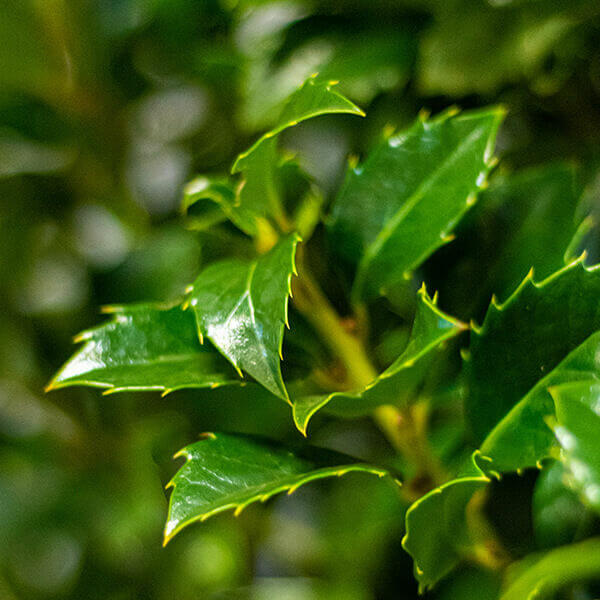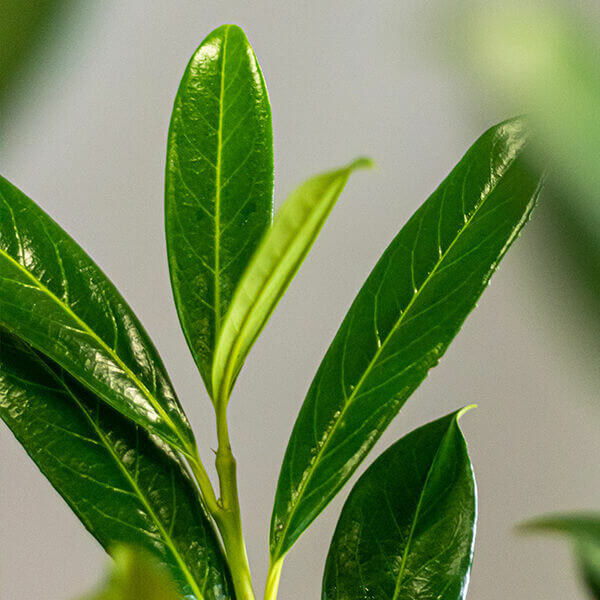Hedge Plants For Security And Privacy
Enhance your garden's attraction with lush hedge varieties such as Yew (Taxus), Thuja, Laurel, Photinia, and Bamboo, celebrated for their structural stability and ecological advantages.
Yew and Thuja supply evergreen coverage and winter strength, while Laurel uses fast development and broad, fragrant leaves.
Photinia includes seasonal beauty with its dynamic red foliage, and Bamboo provides a low-maintenance, serene atmosphere.
These hedges enhance air quality, reduce noise, and develop tranquil, private spaces.
Appropriate planting, spacing, and upkeep make sure vigorous growth and eco-friendly harmony.
Explore how these rich varieties can elevate your garden's charm and wellness.
Key Takeaways
Transform Your Garden With Lush Hedge Varieties
- Select Yew for its thick, evergreen development and unequaled longevity.
- Choose Laurel for its fast development and broad leaves, making sure quick personal privacy.
- Pick Photinia for its vibrant seasonal foliage, which turns a striking dark red.
- Utilize Bamboo for a low-maintenance, winter-hardy hedge with aesthetic appeal.
- Area plants 2-3 per meter and prune frequently for optimum development and health.
Popular Hedge Plants
When changing a garden with lush hedge ranges, it's important to consider popular hedge plants such as Yew, Thuja, Laurel, and Photinia due to their distinct attributes and advantages.
Yew (Taxus) is extremely respected for its durability and thick, green development, making it a prime option for sustaining landscapes.
Thuja is kept in mind for its evergreen foliage and robust winter season durability.
Photinia adds seasonal vibrancy with red leaves that darken in time, creating dynamic visual appeal.
Laurel offers rapid growth and aromatic, broad leaves, perfect for fast privacy.
Additionally, Bamboo is an outstanding option for atmosphere, providing a low-maintenance, winter-hardy choice that improves the garden's aesthetic with its elegant, swaying walking canes.
These choices accommodate a variety of horticultural needs and choices.
Benefits of Garden Hedges
Garden hedges offer a multitude of advantages, making them a valuable addition to any landscape. These natural barriers are cost-effective to carry out and offer significant wind defense, improving air circulation and adding to noise decrease. The thick foliage of hedges like Thuja and Beech ensures personal privacy by obstructing visibility, developing a peaceful and remote environment.
Hedges likewise play a crucial function in microclimate guideline, offering a stable environment that fosters plant development and lessens temperature fluctuations. Their intricate leaf structures filter toxins, enhancing air quality and adding to a healthier garden environment.
Moreover, hedges master noise reduction, absorbing and deflecting sound waves to lower ambient noise levels. This double performance of supplying both acoustic and visual privacy boosts the total harmony and aesthetic appeal of any garden.
Planting and Upkeep Tips
For a successful hedge, meticulous preparation of the planting location is crucial. Make sure the soil has proper pH and drain to support strong root development.
Area the plants appropriately for the selected types. Water the hedge frequently throughout its initial development stage, adjusting as needed with seasonal modifications.
Implement a methodical pest control and disease avoidance strategy, using natural or chemical treatments when essential. Routinely inspect for aphids, mites, and fungal infections.
Apply mulch to keep wetness and reduce weeds. Seasonal pruning promotes dense growth and air flow, vital for plant health.
Following these standards will assist you cultivate a lively, well-maintained hedge that enhances the charm of your garden.
Spacing and Cutting Guidelines
Spacing and Trimming Standards
Appropriate spacing and cutting are important for cultivating healthy, aesthetically appealing hedges. Appropriate spacing makes sure each plant gets enough nutrients, light, and air flow.
Follow these guidelines for ideal hedge upkeep:
- Spacing: Position hedge plants 2-3 plants per meter to motivate robust development.
- Pruning Methods: Regular pruning is important for preserving preferred hedge height and shape. Trim new development in summer and cut back older wood during winter.
- Seasonal Care: Change cutting approaches and schedules according to seasonal requirements to ensure plant health.
- Hedge Height: Regularly monitor and cut to keep the wanted hedge height and accomplish uniform visual appeals.
Abiding by these actions will ensure your hedge grows, enhancing both the appeal and functionality of your garden.
Picking the Right Hedge
Choosing the Right Hedge
Selecting the proper hedge includes evaluating aspects such as fully grown height, foliage density, and environmental strength. Successful hedge plant selection requires comprehending each species' growth attributes and site-specific versatility.
For example, Yew (Taxus) offers excellent longevity and dense development, while Thuja is noteworthy for its winter season durability. Additionally, thinking about maintenance requirements is crucial; fast-growing types like Laurel or Privet demand routine trimming, whereas low-maintenance options like Bamboo or Ivy may be preferable for those seeking minimal upkeep.
Environmental factors such as soil type, light schedule, and wetness conditions should likewise guide the choice process. This careful technique ensures the chosen hedges will thrive, supplying both aesthetic and functional benefits to the garden landscape.
Delivery and Planting Guidance
To guarantee your hedge plants flourish, they need to be provided by specialized carriers and planted promptly upon arrival.
Follow these important steps for effective planting:
- Soil Preparation: Improve the soil with organic matter to enhance drain and nutrient content.
- Planting Depth: Develop a trench two times the width and equal to the depth of the root ball.
- Watering Methods: Water thoroughly after planting, keeping the soil consistently wet but not filled.
- Mulching: Use a layer of mulch to keep moisture and reduce weeds.
Customer Support and Service
Given the crucial role of prompt assistance in horticultural pursuits, our client assistance group is readily available 6 days a week through telephone, e-mail, and social media to offer expert guidance and quickly attend to any issues. Their dedication to fast action times makes sure consumer satisfaction by dealing with inquiries related to plant health, optimal planting techniques, and maintenance schedules.

Interaction Method
-----------------
Within 24 hr
This comprehensive support system, strengthened by an outstanding 9.3/ 10 consumer ranking, highlights our dedication to enhancing the gardening experience for every client.
Often Asked Concerns
How Long Does It Consider Hedge Plants to Develop?
Hedge plants generally require one to three years to become fully established, with the precise duration varying by species and growing conditions.
Effective care during this critical duration is necessary for robust development. Constant watering, vigilant weed control, and appropriate fertilizer application are pivotal in promoting strong root development.
For example, fast-growing species like Laurel may develop faster, while slower-growing ranges such as Yew might take longer. Diligent upkeep speeds up the facility procedure, resulting in dense and healthy hedges.
What Are the very best Hedge Plants for Privacy?
The concern of the very best hedge plants for personal privacy involves evaluating evergreen and deciduous alternatives.
Evergreen hedges like Thuja, Laurel, and Cypress supply year-round protection, guaranteeing continuous personal privacy.
On the other hand, deciduous hedges such as Beech provide seasonal privacy, shedding leaves in cooler months.
Key maintenance pointers for personal privacy hedges consist of regular trimming, fertilizing in spring, and correct spacing-- typically 2 to 3 plants per meter.
Additionally, constant watering and persistent weed removal are vital for promoting healthy, thick growth.
Can Hedge Plants Draw In Wildlife to My Garden?
Yes, hedge plants can attract wildlife to your garden by supplying essential advantages like shelter, food, and nesting sites, therefore improving regional biodiversity. For example, yew, holly, and laurel are excellent for drawing in birds, while ivy supports a variety of bugs.
Nevertheless, it is essential to keep in mind that there are some downsides, such as increased maintenance to handle pests and routine upkeep. Thoroughly selecting and preserving hedge ranges can help balance these advantages and drawbacks, ultimately promoting a sustainable and lively community in your garden.
Exist Any Flowering Hedge Plants Available?
Yes, there are flowering hedge plants offered that can boost the beauty of your garden.
For example, Elaeagnus, likewise known as Olive Willow, produces fragrant white flowers in the fall, adding a touch of sophistication.
Photinia, another popular option, showcases lively red leaves that mature into a rich green, producing a vibrant visual result throughout the seasons.
To ensure these plants flourish, it's vital Additional resources to practice proper pruning techniques and seasonal maintenance, such as trimming new development in the summer season and cutting down in the winter season.
These steps will help maintain the health and aesthetic appeal of your flowering hedges.
How Do I Avoid Pests in My Hedge Plants?
To prevent pests in hedge plants, utilize natural insect control techniques and preserve proper hedge care. Introduce advantageous insects like ladybugs, which prey on hazardous pests, to develop a balanced community.
Frequently inspect your hedges for indications of infestation and without delay get rid of any affected parts to avoid the spread. Make sure the health of your hedges by applying well balanced fertilizers and providing adequate water.
Utilize mulching to retain soil wetness and proper spacing to minimize plant stress and promote robust growth. These practices collectively help in minimizing pest problems and preserving a healthy hedge.
Conclusion
In essence, choosing the right hedge varieties such as Yew, Thuja, and Laurel can transform any garden into a relaxing sanctuary. These plants provide year-round greenery, improve visual appeal, and deal useful benefits like noise reduction and wind protection.
Appropriate planting strategies, precise spacing, constant watering, and seasonal cutting are vital for optimal development.
Trustworthy delivery services and expert client assistance guarantee a seamless experience from purchase to planting, making it simpler than ever to elevate your outdoor space.
Garden hedges offer a wide range of benefits, making them a valuable addition to any landscape. These natural barriers are affordable to implement and supply significant wind protection, boosting air blood circulation and contributing to sound decrease. The thick foliage of hedges like Thuja and Beech guarantees privacy by obstructing visibility, developing a secluded and serene environment.

Pruning Strategies: Regular pruning is important for keeping preferred hedge height and shape. Trim brand-new growth in summer season and cut back older wood during winter season.